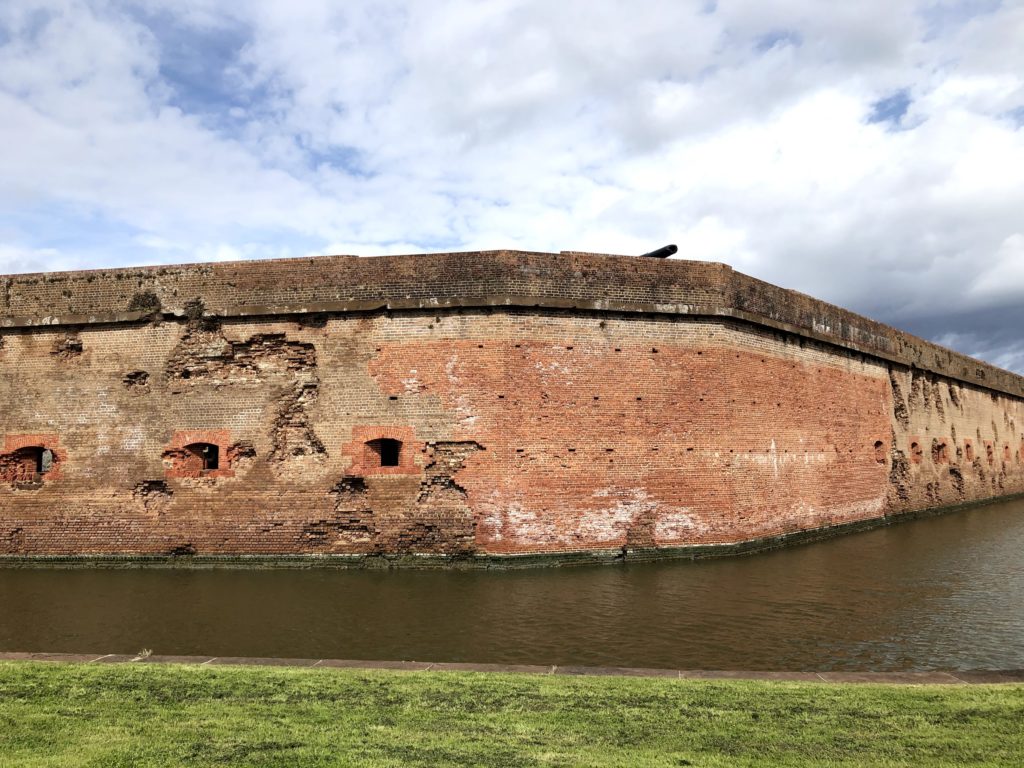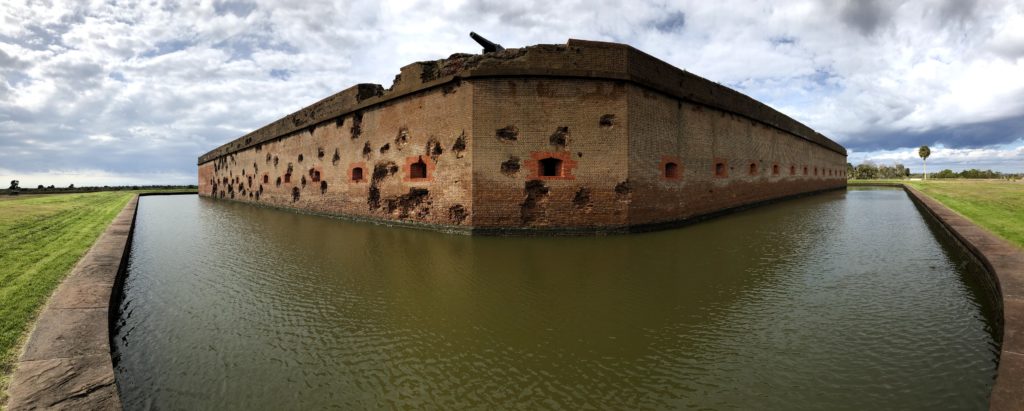On April 10-11, 1862, military science and fortifications would change forever. Situated on Tybee Island, a mile away from Fort Pulaski’s imposing 7.5-foot brick walls, eleven Union field batteries containing 36 cannon and mortars, and most importantly, ten rifled cannon, reduced the fort’s southeast bastion to rubble in thirty hours, exposing the fort’s main powder magazine and forcing its commander, Colonel Charles H. Olmstead, to acknowledge the inevitable and surrender to save his doomed 385-man garrison. In those fateful thirty hours, some 5,275 shots from these 36 guns and mortars shattered more than Fort Pulaski’s southeast wall, doing the same to the invincibility of reinforced brick and stone fortifications that had guided military construction since biblical days. A significant amount of the damage came from the barrels of five 30-pounder Parrott guns among the ten rifled pieces. These massive guns, with an effective range over 8,400 yards, smashed two-foot holes into the brick walls, many of which can be seen yet today. Engineering Captain Quincy A. Gillmore’s willingness to try rifled artillery won the fort, a promotion to Brigadier General, and changed defensive military fortifications forever more.
Although Union control of Fort Pulaski prevented most blockade runners from making full use of Savannah’s friendly port, the town itself did not succumb to Federal control until Sherman concluded his March to the Sea in December 1864, when he telegraphed President Lincoln offering the town as a Christmas present. Sherman started the war none too fond of Lincoln, but after having the chance to meet the president in council with Grant, Sherman’s opinion of Lincoln grew to one more consistent with the fraternal affection evident between his close friend, Grant, and Grant’s fellow hard-luck Illinoisan, Abraham Lincoln.

The Tybee island battery reduced Fort Pulaski’s southeast corner to rubble, blasting a hole through it indicated yet today by the difference in brick color where Union troops patched the fort.

The eastward facing side of the pentagonal fort reveals the damage inflicted in 1862.
